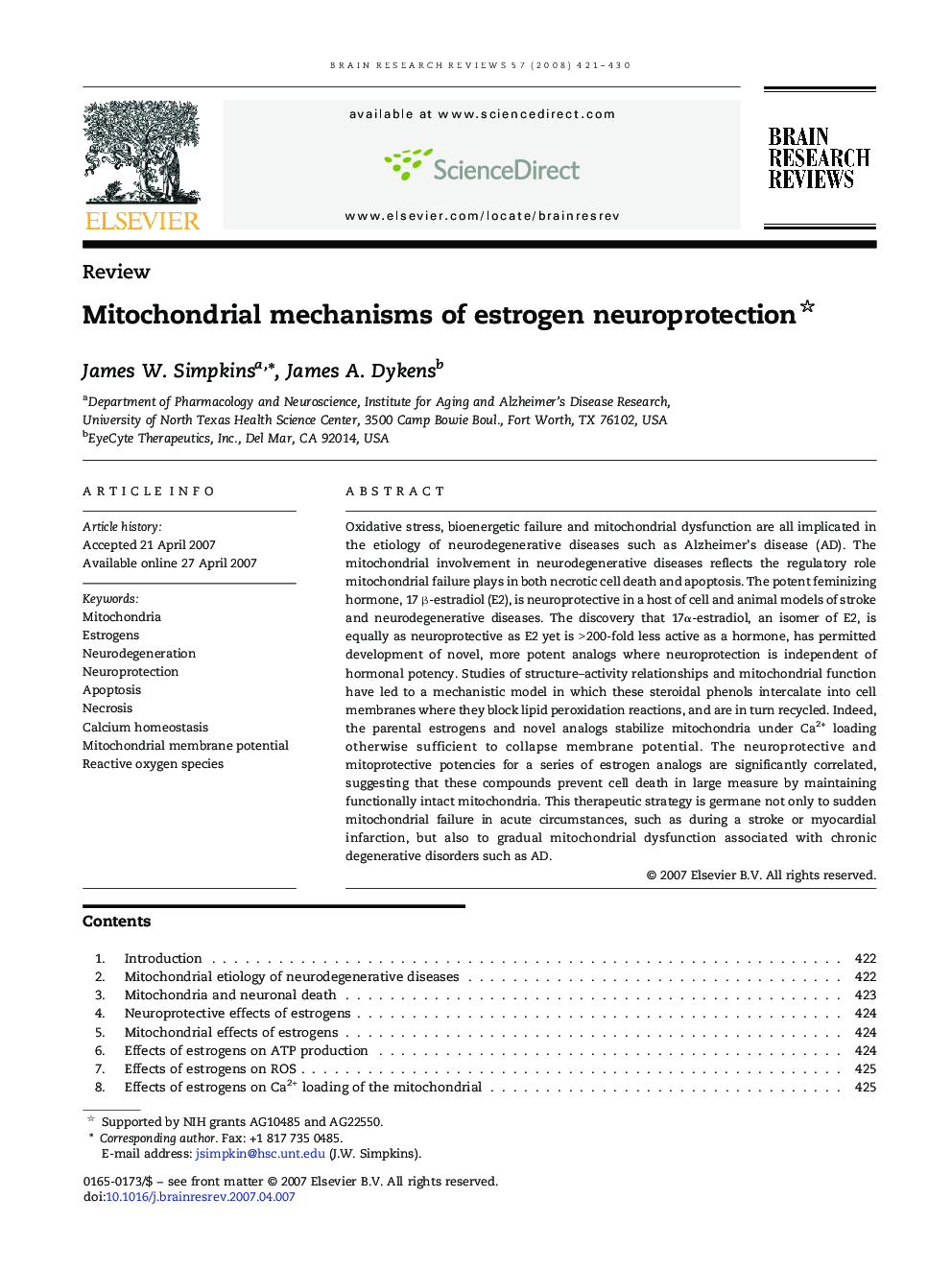| Article ID | Journal | Published Year | Pages | File Type |
|---|---|---|---|---|
| 4333841 | Brain Research Reviews | 2008 | 10 Pages |
Oxidative stress, bioenergetic failure and mitochondrial dysfunction are all implicated in the etiology of neurodegenerative diseases such as Alzheimer's disease (AD). The mitochondrial involvement in neurodegenerative diseases reflects the regulatory role mitochondrial failure plays in both necrotic cell death and apoptosis. The potent feminizing hormone, 17 β-estradiol (E2), is neuroprotective in a host of cell and animal models of stroke and neurodegenerative diseases. The discovery that 17α-estradiol, an isomer of E2, is equally as neuroprotective as E2 yet is > 200-fold less active as a hormone, has permitted development of novel, more potent analogs where neuroprotection is independent of hormonal potency. Studies of structure–activity relationships and mitochondrial function have led to a mechanistic model in which these steroidal phenols intercalate into cell membranes where they block lipid peroxidation reactions, and are in turn recycled. Indeed, the parental estrogens and novel analogs stabilize mitochondria under Ca2+ loading otherwise sufficient to collapse membrane potential. The neuroprotective and mitoprotective potencies for a series of estrogen analogs are significantly correlated, suggesting that these compounds prevent cell death in large measure by maintaining functionally intact mitochondria. This therapeutic strategy is germane not only to sudden mitochondrial failure in acute circumstances, such as during a stroke or myocardial infarction, but also to gradual mitochondrial dysfunction associated with chronic degenerative disorders such as AD.
